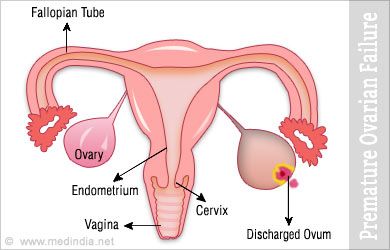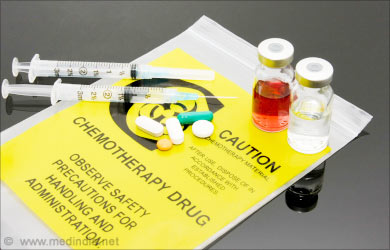- Hall JE.Menstrual Disorders and Pelvic Pain.In Longo DL,Fauci AS, Kasper DL, Hauser SL, Jameson JL, Loscalzo J editors. Harrison s Principles of Inernal Medicine Volume 1, 18thedition The Mc Graw Hill Company 2011:384
- Perimenopause, Menopause, Premature Menopause and Postmenopausal Bleeding. In Padubidri VG,Daftary SNeditors.Howkins and Bourne Shaw s Textbook of Gynaecology, 15th edition Elsevier2011:61
About
Ovarian failure is considered premature when it occurs in women < 40 yrs of age and accounts for 10 % of secondary amenorrhoea which means failure of occurrence of menstruation in women for 6 months or longer in women who have previously menstruated.
The term used is Primary Ovarian Insufficiency and has replaced premature ovarian failure and premature menopause in recognition that this disorder represents a continuum of decreased ovarian function.

Menstruation is an end point in the cascade of events starting in the cerebral cortex and hypothalamus and through pituitary gland and ovaries ending with uterine bleeding with a patent lower genital tract. A disturbance at any level can cause Amenorrhoea.
Primary ovarian insufficiency results from a loss of negative feedback restraint on the hypothalamus and pituitary, resulting in increased FSH and LH levels which are the Follicle Stimulating Hormone and Luteinizing Hormone respectively. FSH is a better marker as its levels are less variable than LH.
Levels may wax and wane and hence serial measurements are necessary for the diagnosis.
Causes of Premature Ovarian Failure
- Chromosomal abnormalities including Turner Syndrome
- Autoimmune diseases are reported in 30-60% of patients. Mumps, thyroid dysfunction, hypoparathyroidism, and Addison s disease can be responsible in some cases.
- Tuberculosis of the genital tract.
- Smoking.
- Radiotherapy and Chemotherapy are causes but the effect can be reversible and the ovaries can start functioning after a year or two of stopping the treatment.

- Can follow hysterectomy or tubectomy.
- Galactosemia
- Premutation carriers of Fragile X syndrome- Risk of severe mental retardation in male children with FMR1 mutations.
- Idiopathic or unknown cause.
- Rarely in mutations of FSH and LH receptors
- Aromatase deficiency
- 17-hydroxylase deficiency
- Prolonged GnRH therapy
- Induction of multiple ovulation in infertility can cause premature menopause when the follicles get exhausted.
Clinical Features In Premature Ovarian Failure
- Amenorrhoea
- Hot flushes
- Sweating
- Headache
- Irritability
- Depression
- Lack of concentration
- Insomnia
- Diminished libido

Investigations in Premature Ovarian Failure
FSH level: 40 milli IU or more-
- E2 Level- 20 pg/ml or less
- Thyroid function tests

- Calcium level
- Chromosomal Study
- Thyroid Antibodies
- Blood Sugar
- X-ray pituitary fossa for tumour
- Ovarian biopsy
- Ultrasound

- Prolactin level
- Progestogen challenge test can help in management as it will indicate if menstruation can be induced provided the endometrium is primed with estrogen.
Management of Premature Ovarian Failure
There are risks of developing cardiovascular disease and osteoporosis and hence this condition should be addressed.
- If the cause can be identified, treatment can be initiated.
- Medical intervention with corticosteroids helps in autoimmune conditions. Plasmapheresis has also been attempted here.
- In some women with decreased estrogen, HRT (Hormone Replacement Therapy) or other drugs are used to prevent osteoporosis.
- Estrogen implant with progestagen or Mirena IUCD offers long term HRT.
FAQs in Premature Ovarian Failure
1. Who is the specialist whom one needs to consult?
The
2. What is the incidence of Premature Ovarian Failure?
The incidence is 1%. Before the age of 30 the incidence is 1 in 1000, at 35 it is 1 in 250 and just before 40 years of age it is 1%.
3. Is it true that smoking can cause Premature Ovarian Failure?
Smoking can lead to premature menopause and the age when it occurs depends on the degree of smoking.
4. How are hysterectomy and tubectomy responsible for Premature Menopause?
In 15-50% of the patients, following hysterectomy, kinking of the ovarian blood vessels leading to its blockage can occur and this leads to ovarian failure. This can occur after tubectomy too.





